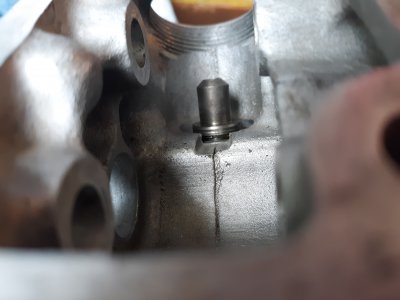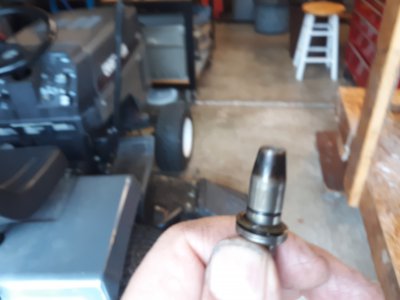- Joined
- Dec 8, 2015
- Messages
- 111
I purchased a 1991 Honda Trail 90 non-runner for project to tinker on First off let me say that I am not a mechanic or experienced on engine work. I have been watching a lot of videos and reading to learn . When I disassembled the cylinder and head, I seen that the valve guide was not seated completely into the head. I was able to push it out with a light press of the thumb. It is supposed to be .0015 press fit.
I have been looking at all the correct ways to repair this. I also contacted two cycle machine shops and they said they couldnt do anything - oversize guides are not available. It would be best to find a used head.
Does anyone know if JB-Weld or a high temp loctite product could be used hold the guide in the cylinder head? It is a tight slip fit. Steel guide to aluminum head. I was thinking that the different expansion rate of the two metals would not allow this to work. I know its not the right way - but It would be a cheap easy solution to get the engine running.
Thanks, Jim
I have been looking at all the correct ways to repair this. I also contacted two cycle machine shops and they said they couldnt do anything - oversize guides are not available. It would be best to find a used head.
Does anyone know if JB-Weld or a high temp loctite product could be used hold the guide in the cylinder head? It is a tight slip fit. Steel guide to aluminum head. I was thinking that the different expansion rate of the two metals would not allow this to work. I know its not the right way - but It would be a cheap easy solution to get the engine running.
Thanks, Jim



